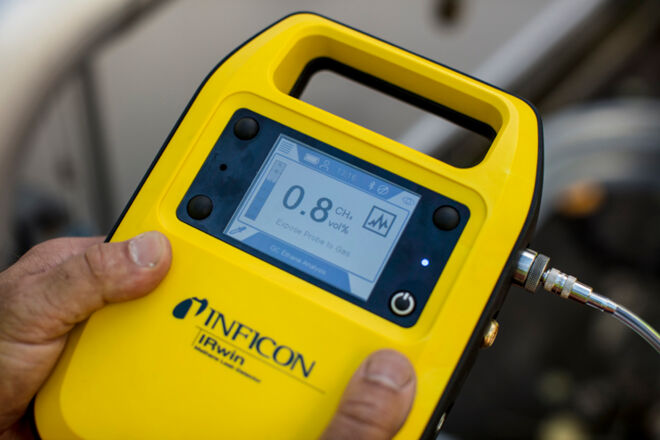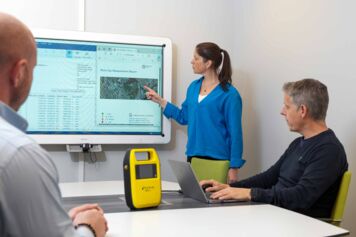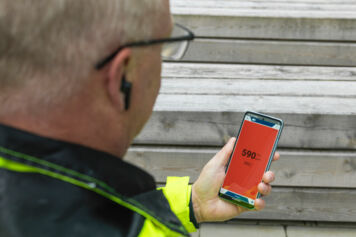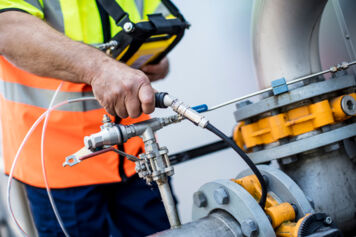Reduce the Number of Bar Holes When Pinpointing Natural Gas Leaks
Operating procedures and regulations around the world require bar hole drilling to be performed each time a suspected natural gas leak is detected, in order to pinpoint and classify it. However, unnecessary holes can be avoided, or at least reduced, by using the right equipment. This saves drilling and plunging operators a lot of time. It also reduces the costs of road closures and unnecessary repairs or replacements of paved roads.

Why bar holing?
When an operator is called to an emergency response situation or performs a leak survey and finds a leak, it must be quantified and classified in order to determine if the leak must be repaired immediately or monitored only.
The highest concentration found with traditional methods, sniffing on the surface, will not necessarily guide the operator to the most likely place to start the bar holing. The surface of the ground, crack formations or even the conditions underground could generate gas escapes that are far away from the real leak position. Bar holing, a method of measuring on a defined depth below the ground surface, was therefore introduced to make sure that the same conditions would apply at each single measuring point.
Significantly reducing the number of bar holes with IRwin and its accessories
The IRwin® methane leak detector, in combination with the original bell probe from INFICON, is able to draw high concentrations of methane through most surfaces by creating a vacuum. This allows for a significantly faster pre-pinpointing to guide the operator to the most likely place to start drilling.
Typically, the surface is sealed when the bell probe is pressed against the ground by hand or, preferably, by adding the operator’s body weight to the outer surface of the bell. The normal behavior of the instrument is an initial increase of concentration as the gas at (or close to) the surface is drawn into the instrument. After a few seconds, the concentration typically levels out or even decreases. This is due to the concentration dilution in the probe and on the upper structure of the surface.

After a few more seconds, the concentrations start to rise as the vacuum begins to pull the gas through the surface and into the instrument. Depending on the concentration under the ground, the values on the instrument can rise for twenty to thirty seconds until it starts to saturate. The smoother the surface, such as paved pedestrian zones, the better it works. Volume percent levels or even tens of percent are quite common.
This pinpointing method without any holes is easily made over large areas within a few minutes. The bar holing is typically narrowed down to a very small area and requires only a few bar holes to precisely determine the location of the true leak.
Benefits of reducing the number of bar holes
Being able to limit the number of bar holes has several benefits. First of all, it significantly reduces the time spent on breaking the surface and repairing holes. Furthermore, if the suspected leak is located in a congested city area or if the structure above and below the ground is complex, stopping or re-routing traffic can be costly and annoying.
All measures that could be taken to improve efficiency and operator safety should be taken, and efficient pinpointing is one of them.


Do you want to know more?
If you want to know more about how to keep the number of bar holes to minimum, check out the IRwin Methane Leak Detector and its innovating portfolio of accessories!
Do You Want to Improve your Natural Gas Survey?
Contact our experts and discover all advantages of IRwin Methane Leak Detector!
Want to Learn More about our Products and Applications?
Our newsletter offers regular updates on our latest products, applications, upcoming events, and other interesting news.
Read more here

Spend your time on more important things than manually documenting your survey work

IRwin Check-In App

Faster and more efficient LDAR is the solution to cut methane emissions
